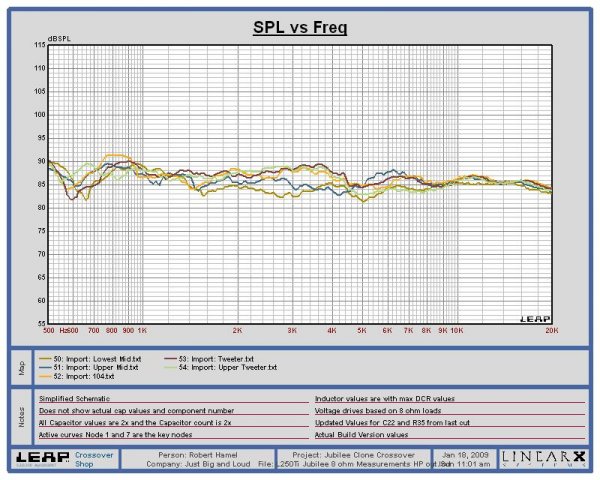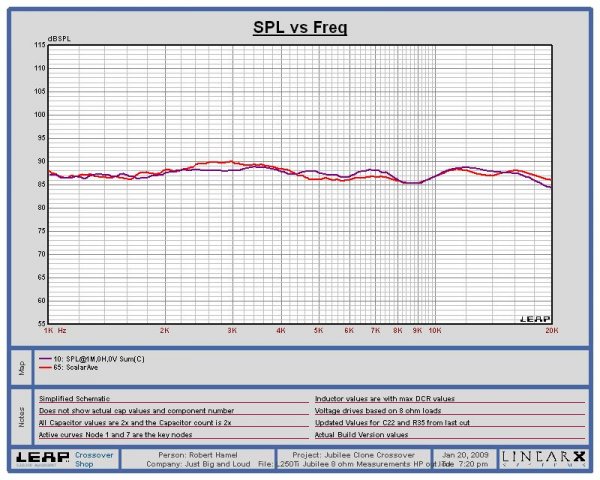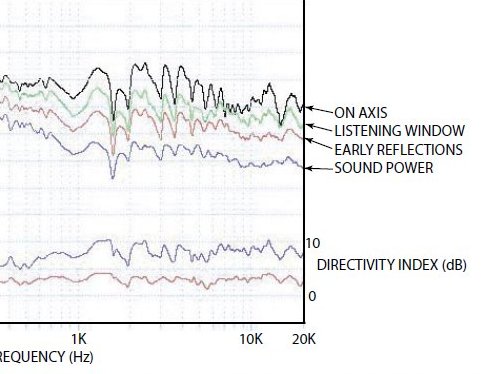In fact, the positional effects can be larger than the subjective differences between the loudspeakers themselves.
Hello microstrip
That's a surprise?? That's what proper placement is all about. The same speaker can sound awful if poorly placed. All the speakers under evauation are placed in the same spot during the evaluations. That really negates the effects in the referenced study
For me, the fantastic part of the work is taking all the data from 70 comprehensive measurements (having a resolution of 48 points per octave each, if I remember well) and reducing it to a reduced set of data (one parameter) that can be meaningful analyzed mathematically versus the preference parameter and validated. It is an huge work and it is why their papers are tens of pages long. Just reading the graphs and figure captions is not enough to appreciate their work.
Not as difficult as you think. If you look up LEAP Crossover shop you can have up to 200 measurements stored for each crossover. The program also does curve averaging. You can take any number of measurements and average them to get the curve. An example would be say the listening window +/- 20 degrees vertical and +/-30 degrees Horizontal. You would just select the appropriate measurements and use the average feature to get the curve. I have used it several times doing measurements on large speakers which are a real PITA to measure and it works great.
Attached are a couple of LEAP plots to show you what I mean. The first is the multiple measurements and the second is the ploted average against the predicted curve from the software.
Rob
Attachments
Last edited:










